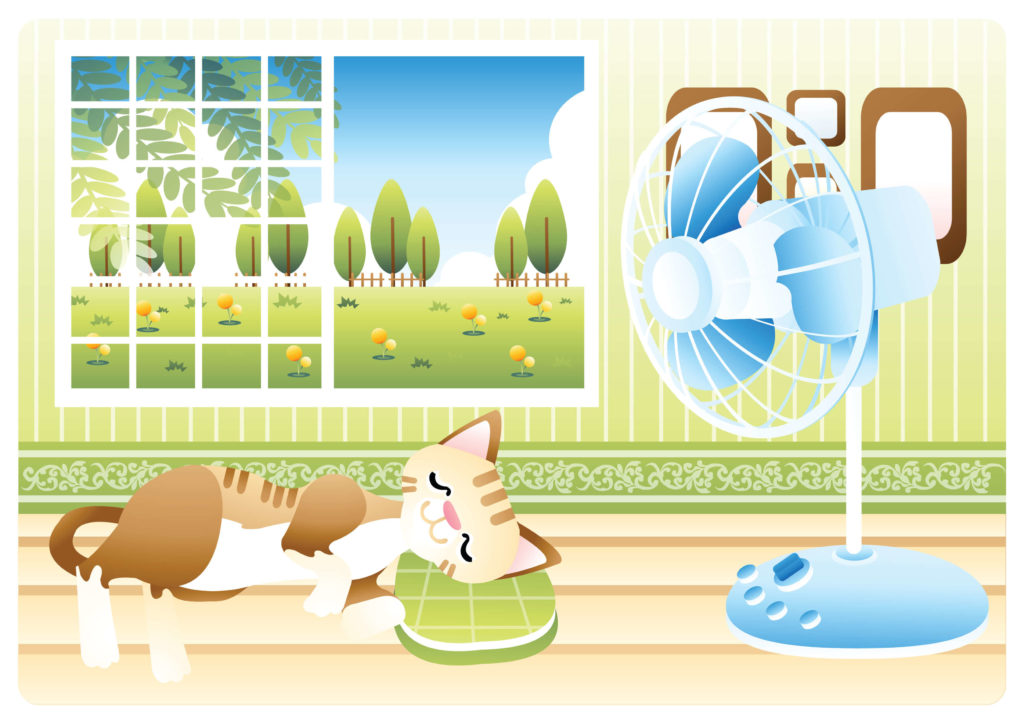Sleeping in Hot Weather

I’ve been thinking a lot about sleeping in hot weather lately.
Actually, I’ve been thinking about hot weather in general lately.
You see, it’s the last day of May here in Arizona. I feel like that might be all I need to say about that, but just in case you’re not familiar with our desert temperatures, spring can be hot, leading to summer, which is HOT.
Today – as I type this – I have three very nice HVAC technicians replacing my 25-year-old air conditioner with a brand new, high efficiency system.
You know what I’m most excited about? Being able to sleep cooler at night than I have in several years. I’m very excited about that!
Sleeping warm vs sleeping cool
I’ve been trying to put off the expense of replacing this old system, and I’ve had to baby it for the last few years. To avoid burning my poor, geriatric compressor out completely, I haven’t been able to cool the house down to anywhere near the ideal sleeping temperature.
Let me put that in perspective. I’m going to speak in Fahrenheit here. I never could make my U.S. brain translate to Celsius.
I’ve been sleeping at 80° through most of the hot weather for a few years. Sometimes, when it’s been really hot – meaning high daytime temps over 110° and even 115° or more – the nighttime low can dip only as low as the mid-90s. On those nights, I’ve kept the thermostat at 81° or even 82°.
It’s been “okay”. A ceiling fan on high speed has helped, but I certainly haven’t slept my best during those warm nights.
Here comes the perspective part. Experts say the ideal temperature for sleep is 65°.
Sixty-five degrees!
Oh, that’s cute. Yeah, not a chance. Not in Phoenix…in July…with a 25-year-old air conditioner.
But tonight, I’ll be sleeping a lot closer to 65° than I’ve seen in many springs and summers!
A little about the ideal temperature for sleep
Okay, so about this 65° business. Sleep experts recommend a range between 60° and 67° for optimum sleep, and after doing studies, have settled on 65° as the ideal.
Our circadian rhythm is one reason for sleeping cooler. Our natural body temperature decreases slightly as nighttime approaches. It’s telling us it’s time to stop our activity and rest. Having a bedroom that’s on the cooler side will reinforce that message and help us fall asleep and stay asleep more easily.
Cooler temperatures also signal our body to produce melatonin, our very own sleep-promoting hormone.
And let’s face it, it’s more pleasant to fall asleep with cozy covers – or at least a sheet – cuddled up under your chin. And way more pleasant than lying there, constantly moving your arms and legs to a cooler spot on the sheets and turning your pillow over to the cooler side, waiting to fall asleep.
Conflict between comfort and energy efficiency
The U.S. Department of Energy (DOE) and Energy Star® (PDF) recommend keeping your summertime thermostat set at 78° while at home and awake, and 82° while sleeping. Huh. I guess I’ve been right on track.
These are the temperatures that will keep us minimally comfortable while also saving us on energy costs. But I don’t know about that 82° sleeping temperature. I guess they think we’ll be asleep anyway, so we won’t notice how hot it is.
But their single-minded concern with energy savings doesn’t consider our getting our best sleep at all. Maybe we should have the sleep experts and the energy experts fight that one out.
I’ll be sleeping cooler tonight
Well, Tony, Bobby and Gary have been working away for 2 hours now. That’s how long the AC has been off, and it’s not horrible in here…yet. But it’s fine. I know I’ll be happily slumbering away at 78° or less in about 12 hours.
Nighty-night!
